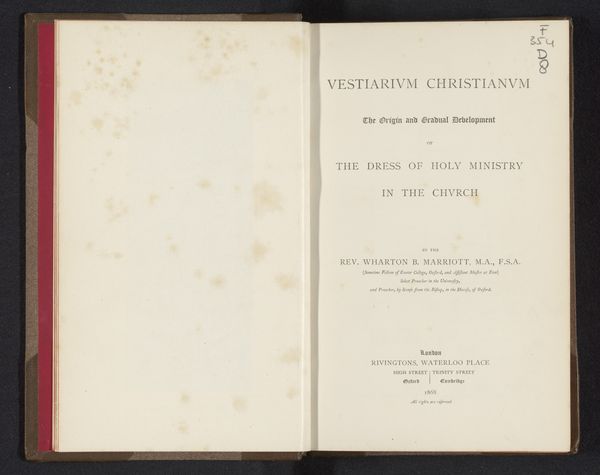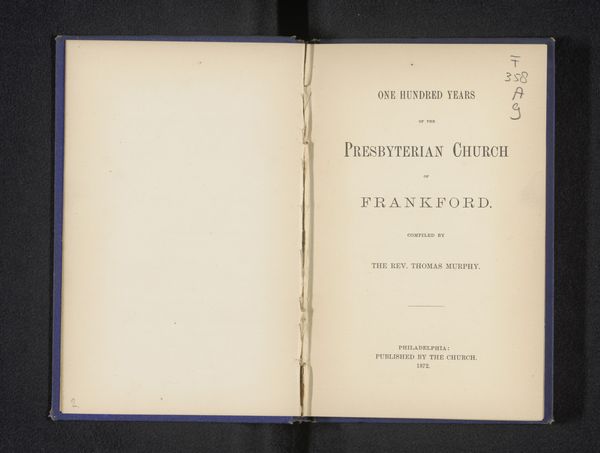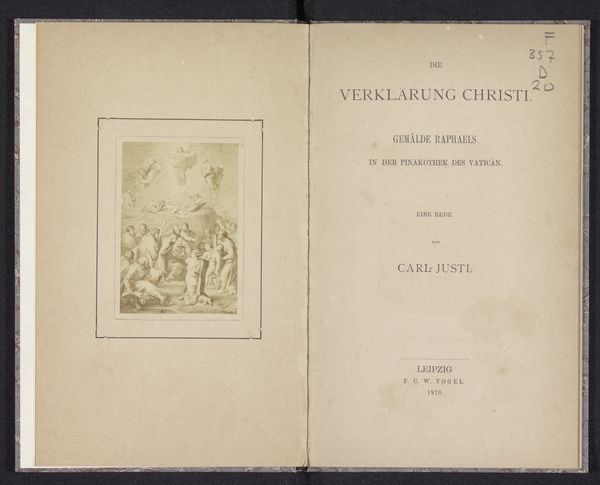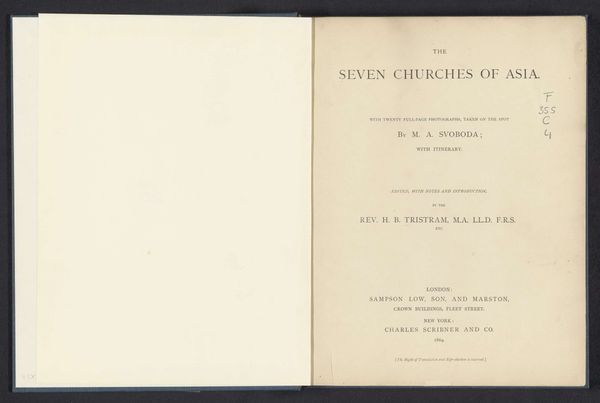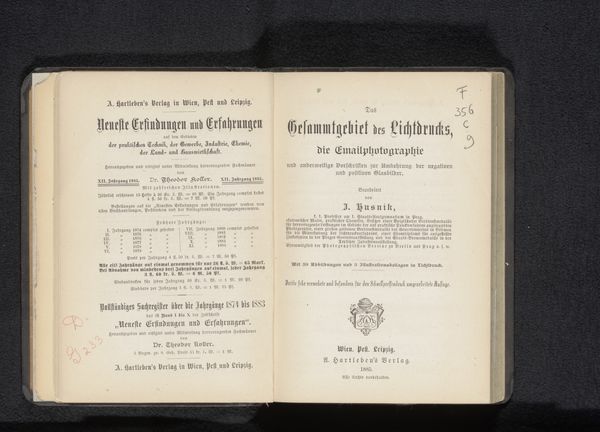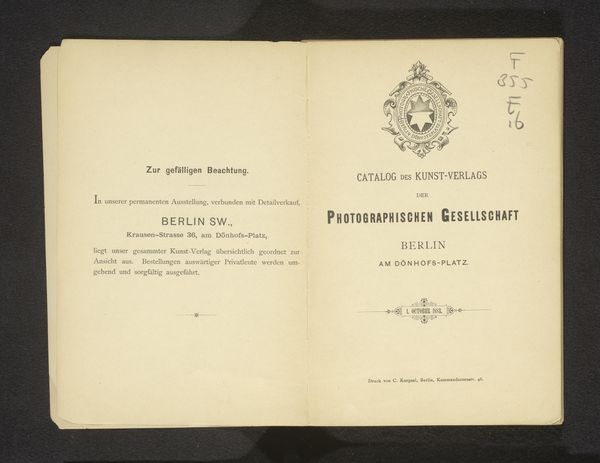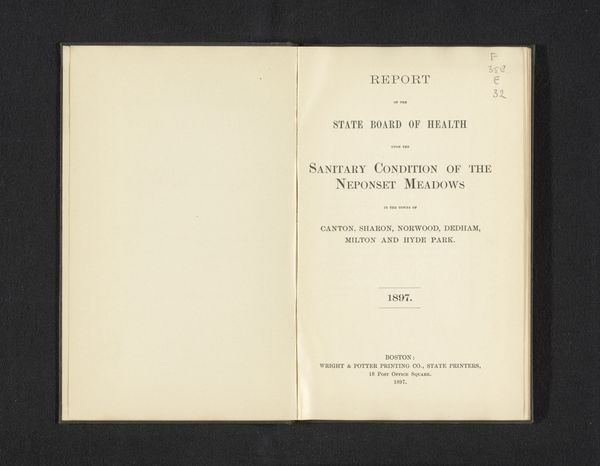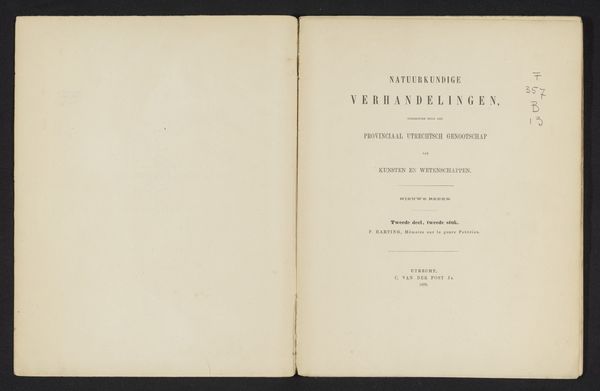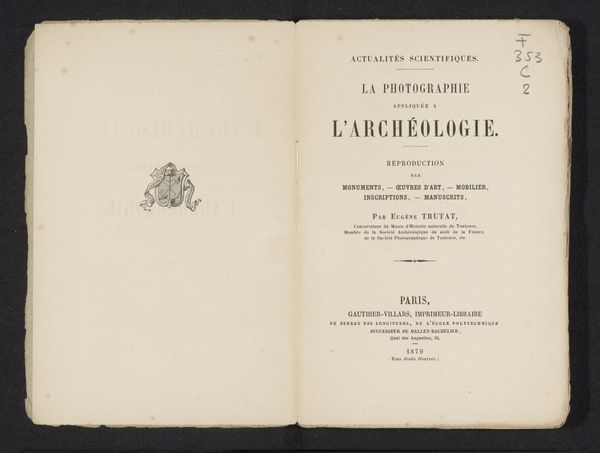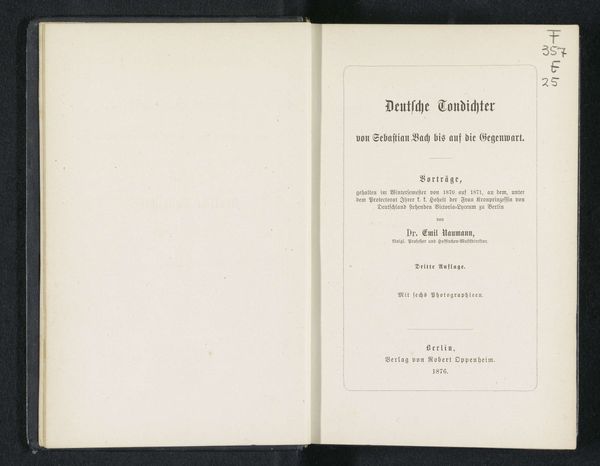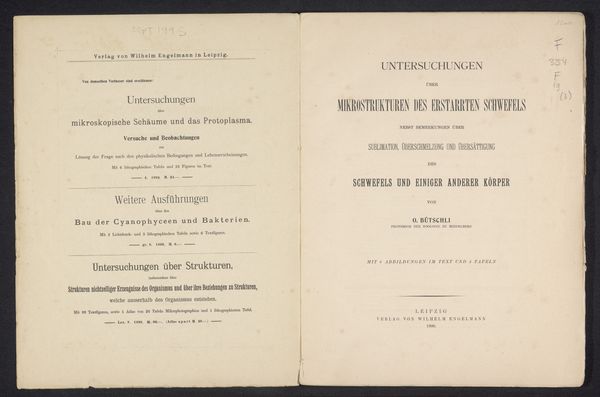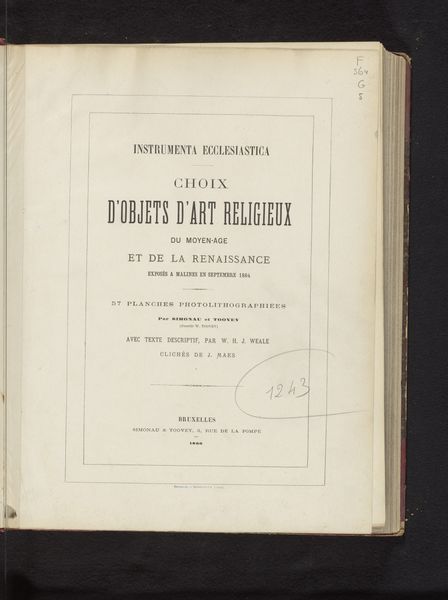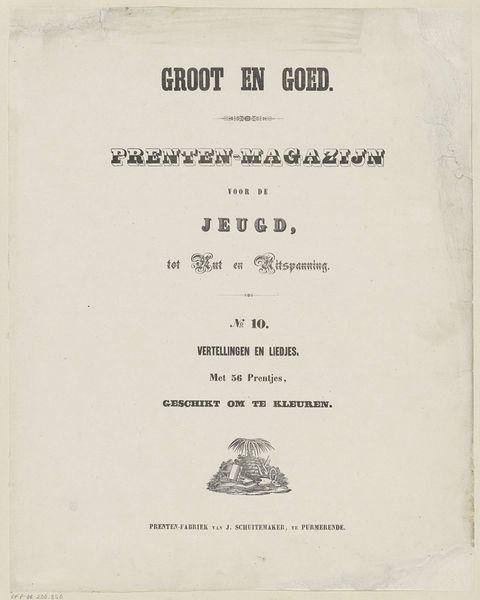
Photographisk album over Kong Christian IV og denne konges beroemte samtidige 1862
0:00
0:00
print, paper, photography
#
portrait
# print
#
paper
#
photography
#
history-painting
#
modernism
#
historical font
Dimensions: height 360 mm, width 280 mm, thickness 25 mm
Copyright: Rijks Museum: Open Domain
Curator: Here we have "Photographisk album over Kong Christian IV og denne konges beroemte samtidige," which roughly translates to "Photographic Album of King Christian IV and this king's famous contemporaries," published in 1862. Editor: It looks like a fairly simple paper print, primarily text-based, invoking a formal tone with its subdued design elements and reliance on typography. Curator: Yes, precisely. Note the intentional choice of the historical font style, signaling a link to the past. The very act of creating a "photographic album" devoted to Christian IV reflects the ongoing cultural memory of the Danish Golden Age and a desire to visualize national identity through historical figures. Editor: Interesting. I wonder about the labour involved in producing this. Photography in 1862 would have been a complex chemical process, especially when mass-producing portraits for an album. Think about the sourcing and preparation of photographic chemicals, the printing processes involved on the paper itself. It speaks to a burgeoning industry surrounding image production. Curator: And the implicit symbolism! Christian IV is not just a historical figure but a representation of stability and authority during a period of Danish prominence. His “contemporaries”, although less known to a contemporary audience, collectively constitute the socio-political fabric of the era, each face carrying narratives of power, influence and memory. Editor: I'm drawn to the publisher's imprint, "Thieles Bogtrykkeri." That points directly to the materiality and distribution network. It tells me something tangible about its reception, consumption and purpose within a Danish society becoming increasingly fascinated with photographic technologies and historicism. Curator: So it functions as a kind of secular icon? By assembling this album, J.P.F. Kønigsfeldt offers the Danish public a collection of ‘saints,’ establishing a pantheon of national heroes. Editor: Or maybe an early form of mass media that attempts to define a certain Danish identity through affordable reproductions available to more than just the aristocracy. Curator: Food for thought, indeed. A simple-seeming print unfolds complex questions around historical representation and cultural values. Editor: Right. And thinking about the process, labor, and distribution adds valuable dimensions to how we understand historical meaning.
Comments
No comments
Be the first to comment and join the conversation on the ultimate creative platform.
